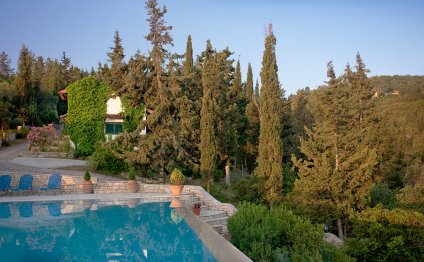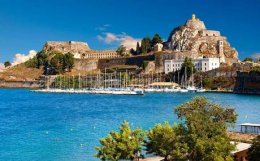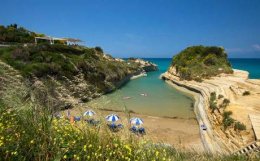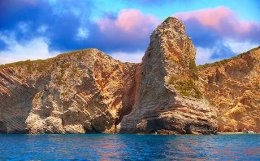
Greece Travel destinations

Why go?
Corfu has figured in our consciousness since Edward Lear visited and painted while it was a British possession from 1814 to 1864. The Durrell brothers (and Henry Miller) lodged it even more firmly in the Anglo-Saxon psyche with their late-1930s sojourns, and subsequent rhapsodising in print.
Today the island has a somewhat chequered reputation, due in part to its associations with Peter Mandelson/Jacob and Nat Rothschild (habitués of the north-east coast, popularly dubbed “Kensington on Sea”) but also the notoriously downmarket excesses of Kávos in the south.
Yet there is plenty in between for the rest of us, on one of the greenest of the Greek islands – thanks to intermittent but torrential rains from September to June, and the thousands of olive trees that carpet the landscape. It is also, perhaps surprisingly, one of the more rural, sleepy islands away from the touristic honeypots.
 Tourist development is quarantined on certain coastal patches, and once inland you really seem to be on another island, even another era. Secondary roads appear not to have changed (in width at least) since British times, and perennially rutted surfaces make driving a challenge.
Tourist development is quarantined on certain coastal patches, and once inland you really seem to be on another island, even another era. Secondary roads appear not to have changed (in width at least) since British times, and perennially rutted surfaces make driving a challenge.
In remote glades, Corfiot villagers still celebrate summer-and-autumn panigýria (religious festivals-cum-fairs) with music and merchandise stalls – watch for posters (usually Greek only) plastered onto olive trees, and don't expect much action until after 8pm as a rule. Olive culture was traditionally rather desultory – the Corfiots for years didn’t prune, or pick the fruit, local patron saint Spyridon having forbidden the practices in a vision – and many groves still retain a romantically half-wild aspect.
 Corfu has figured in our consciousness since Edward Lear visited and painted while it was a British possession from 1814 to 1864.
Corfu has figured in our consciousness since Edward Lear visited and painted while it was a British possession from 1814 to 1864.
ALAMY
The old quarters of the east-coast capital, Corfu Town, have been designated a Unesco heritage site. There’s nothing else quite like it between here and Dubrovnik.
With last winter's torrential rains – a record 132cm between September 2014 and early June in 2015 – finally over, now’s the time to begin seriously considering a spot on one of Corfu’s many beaches – those along the west- and southwest-facing coasts rate among the finest in Greece, with enough heaped sand to satisfy the most jaded Californian or Australian.
When to go
Corfu is “open for business” from (Orthodox) Easter until October, though many resorts hotels only work from May to September inclusive. Climate patterns, as worldwide, have been changing locally, with the last strong spring rains bucketing down as late as the end of May in 2013 and 2014. For discounted room rates, better taverna service and moderate weather, late May to late June, and the last two-thirds of September, are the best times; during July and August everything is fully functioning, and the sea thoroughly warmed up, but you’ll contend with crowds and either intense heat or the maïstros, the infamous north-westerly wind which buffets beaches all afternoon.
RELATED VIDEO



Share this Post
Related posts
Greece Travel Blog
Everyone recognises Greece. From it s gods, to it s ancient architecture, to it s scenic and beautiful islands. We managed…
Read MoreSantorini Greece Travel Packages
This Aegean island has been charming visitors for centuries with its pretty villages, romantic sunsets and tranquil pace…
Read More










